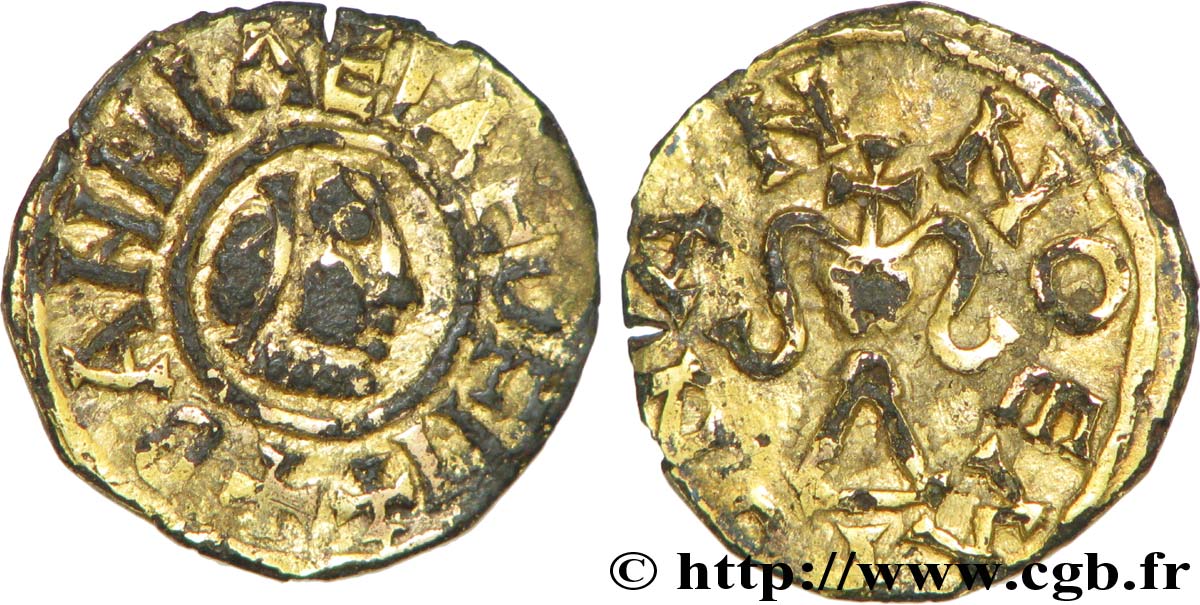v36_1343 - MONETE DELLO MEROVINGI - BANASSAC (BANNACIACO) - Lozere Triens au type de CHARIBERT II (528-531)
MONNAIES 36 (2008)
起拍价 : 2 000.00 €
估价 : 3 500.00 €
未售出的物品
起拍价 : 2 000.00 €
估价 : 3 500.00 €
未售出的物品
种类 Triens au type de CHARIBERT II (528-531)
日期: (VIIe siècle)
铸币厂名称/城市 Banassac
材质 gold
直径 14,5 mm
模子方针 3 h.
重量 0,98 g.
稀少度 UNIQUE
关于品相的说明
Monnaie sur un flan large et régulier avec le drot et le revers complet. Le métal est de mauvaise qualité, avec une teinte plus sombre sur les parties les plus en reliefs, comme pour les monnaies fourrées ou en très bas or de cette époque
出版目录中的项代码 :
正面
正面的文字 + BANNIACIACO FIT +.
正面的说明书 Tête diadémée à droite, diadème et cou perlés, dans un grènetis intérieur ; légende circulaire commençant à six heures et grènetis extérieur.
背面
背面的文字 IONAN NOEM.
背面的说明书 Calice à deux anses, surmonté d’une croisette.
评论
Ce triens semble unique, avec la légende + BANNIACIACO FIT + et le grènetis intérieur au droit. Au revers, le nom du monétaire est confus et ne correspond à rien de tout ce qui est publié. L’alliage est très mauvais, mais c’est souvent le cas sur les frappes tardives. Faut-il conclure qu’il s’agit de l'œuvre d’un faussaire de l’époque de Charibert (sans prendre le risque de nommer le roi sur la monnaie) ou bien d’une frappe officielle reprenant un type plus ancien à une époque de pénurie de métal ?.
This triens seems unique, with the legend + BANNIACIACO FIT + and the inner beading on the obverse. On the reverse, the mint's name is confusing and does not correspond to anything published. The alloy is very poor, but this is often the case on late strikes. Should we conclude that this is the work of a forger from the time of Charibert (without taking the risk of naming the king on the coin) or rather an official strike using an older type at a time of metal shortage?
This triens seems unique, with the legend + BANNIACIACO FIT + and the inner beading on the obverse. On the reverse, the mint's name is confusing and does not correspond to anything published. The alloy is very poor, but this is often the case on late strikes. Should we conclude that this is the work of a forger from the time of Charibert (without taking the risk of naming the king on the coin) or rather an official strike using an older type at a time of metal shortage?








 对产品描述纠错
对产品描述纠错 打印
打印 分享我的选择
分享我的选择 提问
提问 Consign / sell
Consign / sell
 产品介绍
产品介绍





